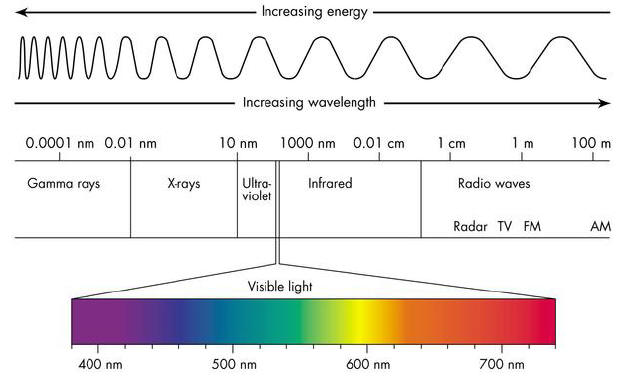MODULE: Colour perception
Step 01 of 09: Introduction
Goals of this Module;
- Familiarise you to colour being wavelengths of light
- Explain that the human visual cortex makes several manipulations to raw colour perception
The basis of human vision is the detection of visible light. Light is electromagnetic radiation composed of subatomic particles called photons, but behaves in manner consistent with our expectations of electricity and radio signals; as waves. Even though it is counter-intuitive to us, in physics, even radio waves are treated similarly to light despite that we cannot see them. This is not news to most as human beings are incapable of seeing the vast majority of electromagnetic radiation. Here's the portion we can see, which we term "visible light";
Note how little of this spectrum is actual visible colour? (the section which is expanded out)

You might notice a few light forms you're familiar with on that spectrum that you knew from everyday use that humans are not capable of seeing, such as the infrared remote you use at home and the ultraviolet light popularised as "black light" on crime drama. What is important for us to note is that all light corresponds to a wavelength, which is the distance between two neighbouring peaks in the wave diagram; that difference in their wavelength is how we differentiate colour. On one end of the spectrum the wavelength, when measured in everyday terms, is as wide as footballl fields for radio waves and as small as the nucleus of an atom for some gamma rays.
For us, the difference is that one end of the colour spectrum is short wavelength (blue/purple)
and the other is long wavelength (red)...